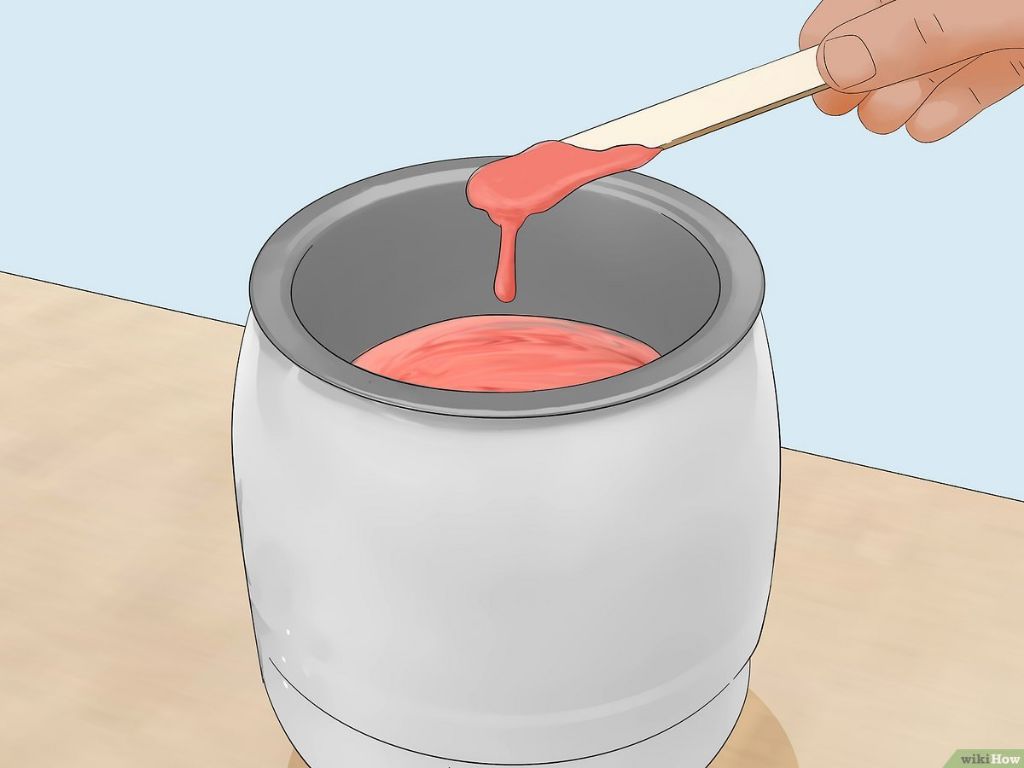What Sticks Do You Use For Waxing?
Waxing is a popular hair removal method that involves applying wax to the skin and then removing the hair from the follicle. The wax adheres to the hair and pulls it out as it hardens and is peeled off. Waxing allows for the removal of hair from large areas and can provide smoother, longer-lasting results compared to shaving. It is commonly used to remove unwanted hair from the legs, arms, back, bikini area, and face.
People choose waxing over other hair removal techniques for several reasons. Waxing can remove short, coarse hairs that shaving misses. It can also keep hair away for several weeks, unlike shaving which only lasts a few days. Many people find waxing to be a convenient and efficient method for managing unwanted body hair. The smooth feel and prolonged hair-free results are appealing benefits that make waxing a popular choice.
Hard Wax vs Soft Wax
Hard wax and soft wax are the two main types of wax used for hair removal. The key difference between them is in the formulation and consistency of the wax:
- Hard wax is thicker in consistency and is applied warm directly to the skin in a thicker layer. It hardens around the hair and is removed by pulling against hair growth. Examples of hard waxes are beeswax and resin wax blends.
- Soft wax is more pliable and sticky. It is applied warm to a muslin or paper strip which adheres to the skin. The strip is then pulled off quickly against hair growth to remove hair. An example is honey wax.
Some of the key pros and cons of hard wax versus soft wax include:
Hard Wax Pros:
- Less painful as only the hair is removed, not the skin
- Better for sensitive areas like the face and bikini
- Doesn’t require cloth strips so less irritation
- Effective for short, coarse hair
Hard Wax Cons:
- Can be messier to use
- Takes practice to learn proper technique
- Not as effective for long hair
Soft Wax Pros:
- Easier to apply and use
- Better for long hair
- Less chance of breakage
Soft Wax Cons:
- Can be painful as skin is pulled
- Not ideal for sensitive areas
- Can cause irritation and ingrown hairs
Overall, hard wax may be the gentler choice, especially for facial and bikini waxing. But soft wax can work better for legs and arms. It’s best to test different waxes to see which provides the best results.
Sources:
https://www.healthline.com/health/soft-wax-vs-hard-wax
Types of Waxing Sticks
There are three main types of waxing sticks used for hair removal:

Hard Wax Beads
Hard wax comes in small beads or particles. It is applied directly to the skin and does not require cloth strips for removal. The wax hardens around the hairs and is pulled off, removing the hair from below the skin’s surface. Hard wax is good for sensitive areas like the bikini line, underarms, and face because it doesn’t pull at the skin1. Popular brands of hard wax beads include GiGi, Satin Smooth, and Cirepil.
Soft Wax Tins
Soft wax comes in tins or jars. It is spread thinly over the skin using a waxing spatula, then removed with cloth strips. Soft wax adheres to the hair shaft itself, not the skin, making it a good choice for larger areas like legs, arms, chest, and back. Common soft wax brands are Nads, Parissa, and Sally Hansen2.
Pre-Made Wax Strips
Pre-made wax strips come with the wax already applied to disposable cloth or paper strips. They are convenient and easy to use, especially for smaller areas like the upper lip and eyebrows. Brands like Veet and Nair offer wax strip kits for home use3.
Choosing the Right Wax
When choosing the right wax for hair removal, there are a few key factors to consider including your hair type, hair thickness, and skin sensitivity.
For coarse, thick hair, a hard wax is often recommended. Hard waxes cling to the hairs as they harden, allowing for the removal of short, stubborn hairs. Popular hard waxes include Gigi Brazilian Body Hard Wax, Wakse Gold Hard Wax Beans, and Nova Wax Nova Hard Wax Microbeads.
For fine, sparse hair, a soft wax is a better choice. Soft waxes coat the hair and are removed using muslin strips. Well-known soft wax brands are GiGi Nourishing Aloe Hard Wax Beads, Gigi Wax All Purpose Honee, and Waxness Wax Necessities Film Hard Wax Beads White Tea.
For sensitive skin, look for waxes formulated with soothing ingredients like oils, aloe vera, or azulene. Perform a patch test first to check for any reactions. Avoid waxing on irritated or broken skin.
Application Techniques
Applying wax correctly is crucial for getting smooth, hair-free skin. Here are some key application techniques to follow:
When applying the wax, spread a thin, even layer in the direction of hair growth. According to experts, going against the grain can break hairs, making them more difficult to remove (https://www.starpilwax.com/blogs/news/how-to-use-hard-wax-like-a-pro). Only coat a small section of skin at a time.
Next, firmly press the strip down over the wax and smooth it out. Rub the strip in the direction of hair growth to ensure maximum adherence. Avoid leaving creases or air bubbles, which can reduce effectiveness.
Holding the skin taut, swiftly pull the strip off in the opposite direction of hair growth. Pulling against the grain allows for the most thorough hair removal. Pull the strip off in one quick motion parallel to the skin for less pain. Apply pressure or soothing gel afterward if needed.
Repeat this process until the area is hair-free. Pay attention to any spots that need re-application. With practice, your waxing technique will become smooth and efficient.
Aftercare
After waxing, your skin will likely be sensitive and irritated, so proper aftercare is essential for soothing the skin and preventing ingrown hairs. According to Post Waxing Aftercare, you should wait 24-48 hours before exfoliating or using lotions or creams on the area.1 Cool showers or compresses can help soothe irritation. Avoid hot baths, saunas, or steam treatments that may further aggravate skin.2
Use an aloe-based moisturizer or aftercare product to keep the area hydrated and prevent redness or itching. Do not pick or scratch the area, as this can cause infection. Wear loose, breathable clothing until irritation subsides. Avoid sun exposure, swimming, or hot tubs for at least 24 hours post-waxing.3
Exfoliating 2-3 times per week after the initial 24-48 hour rest period can help prevent ingrown hairs while keeping skin smooth between waxes.1 If irritation persists for more than 48 hours or signs of infection appear, contact your waxer or physician.
1 nkdwaxing.com
2 theremedyroom.co.uk
3 waxcenter.com
Home Waxing vs Professional
Waxing at home vs going to a professional waxing salon both have their pros and cons. At-home waxing kits have improved greatly, making it easier for people to wax in the comfort of their own home. However, professional waxing still has some advantages.
Some of the pros of at-home waxing include:
- More affordable – Home waxing kits and supplies cost much less than going to a salon regularly.
- Convenience – You can wax whenever you want in the comfort of your home.
- Privacy – Many prefer the privacy of waxing themselves at home.
- Better for sensitive skin – You can control the products used, avoiding irritants.
However, there are also some downsides to at-home waxing:
- Messy – Wax can get everywhere and be difficult to clean up.
- Risk of skin irritation – Improper technique can lead to skin irritation and ingrown hairs.
- Difficult to reach certain areas – Harder to wax your own back or Brazilian area.
- Takes practice – It takes time to learn proper technique.
Going to a professional waxing salon has benefits as well:
- Expert techniques – Professionals are trained in proper waxing methods.
- Quality products – Salons use high-quality waxes and products.
- Hygienic – Salons follow sanitary practices.
- Full service – Professionals can wax all areas of the body.
- Efficiency – Waxing is usually quicker than doing it yourself.
The tradeoffs really depend on your personal preferences, pain tolerance, budget, and how often you need waxing done. Many people find a balance between professional waxing for more sensitive areas every 4-6 weeks and then maintain upkeep with at-home waxing in between.
Safety Tips
Waxing can be safe and effective if proper precautions are taken. Here are some tips to avoid burns, irritation, and ingrown hairs when waxing at home or getting waxed professionally:
Always test the temperature of the wax before applying it. The wax should be warm but not hot enough to burn the skin. Allow the wax to cool slightly between applications to avoid overheating the skin [1].
Exfoliate the area thoroughly 2-3 days before waxing to remove dead skin cells. This helps the hair come out more easily. Gently exfoliate again a few days after to prevent ingrown hairs [2].
Avoid waxing over broken skin, rashes, or sunburned areas. Waxing can further irritate sensitive skin [3].
Apply a soothing aloe-based gel or cream after waxing to calm inflammation and redness. Avoid products with fragrance, which can further irritate.
See a dermatologist if you experience severe irritation, swelling, or infection after waxing.
Frequently Asked Questions
Some common questions about waxing include:
What type of wax is used? There are two main types of wax – hard wax and soft wax. Hard waxes are often used for sensitive areas like the bikini region, while soft waxes work well on larger areas like the legs or back. As per Wax Witch Wax, hard waxes adhere only to the hair and not the skin, making them a good choice for delicate areas.
How often should I get a wax? This depends on your individual hair growth, but waxing every 4-6 weeks can help keep the area smooth. Faster-growing hair may require waxing every 2-4 weeks. It’s a good idea to ask your waxing technician for guidance on your recommended timeframe.
How long does waxing last? Waxing removes hair from the root so it will not grow back for several weeks, versus shaving which only cuts the hair at skin level. As per Waxing the City, waxing can last approximately 3-6 weeks on average before maintenance is required.
Does waxing reduce hair growth? Over time, regular waxing may result in finer, sparser regrowth. However, waxing itself does not permanently reduce hair growth. Your individual hair growth is determined mostly by genetics.
Does waxing hurt? Most people feel some degree of discomfort with waxing, especially the first time. The level of pain depends on your personal pain tolerance and the area being waxed. Using a licensed esthetician and proper pre-wax preparations can help minimize discomfort.
Conclusion:
Waxing sticks are used for hair removal either at home or professionally. Hard wax sticks are good for thicker hair and sensitive skin, while soft wax sticks are better for finer hair. Soft wax also requires the use of strips while hard wax does not. Using the right type, brand and size of waxing stick for your needs will help maximize hair removal results and minimize irritation. Proper application technique is also key. Creating the right wax thickness and pulling each strip in one swift motion is critical. Make sure to follow up waxing with an aftercare routine like using a soothing lotion. While do-it-yourself home waxing can save money, professional waxings tend to be safer and more effective.
In summary, choosing the right waxing stick is essential to a smooth, effective waxing experience. Regardless of hard or soft wax, having high-quality wax designed for your hair type will make all the difference. Following proper techniques and aftercare will also keep irritation at bay. With the right supplies and approach, waxing sticks can effectively remove hair and leave your skin smooth.



